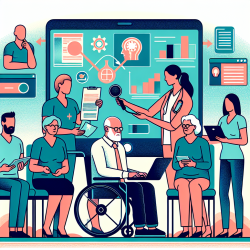Introduction
In recent years, the intersection of technology and healthcare has become increasingly significant, especially for marginalized populations such as youth experiencing homelessness (YEH). The scoping review titled A Scoping Review on Access and Use of Technology in Youth Experiencing Homelessness: Implications for Healthcare provides a comprehensive analysis of how YEH access and utilize information and communication technologies (ICTs). This blog post will explore the findings of this review and discuss the implications for healthcare practitioners seeking to enhance their service delivery to this vulnerable group.
Key Findings
The review identified that a significant proportion of YEH have access to mobile phones and the internet, with 62.6% owning a mobile phone and 68.8% owning a smartphone. Internet usage is also prevalent, with 38.2% accessing it daily. Social media platforms are widely used, with 77.1% of YEH engaging with them.
YEH use ICTs for various purposes, including maintaining social connections, job searching, and accessing health information. However, barriers such as unstable living conditions and financial constraints often hinder consistent access to technology.
Implications for Practice
Healthcare practitioners can leverage these findings to improve service delivery to YEH by:
- Enhancing access to technology in public spaces such as shelters and community centers.
- Developing ICT-based interventions tailored to the needs and circumstances of YEH.
- Providing training for healthcare workers on the use of digital tools to engage with YEH effectively.
- Encouraging positive social interactions through technology to improve health outcomes.
Encouraging Further Research
While the review provides valuable insights, it also highlights the need for further research in several areas, including:
- International studies to understand the impact of different infrastructures and policies on YEH's access to ICTs.
- Research on digital health literacy among YEH to tailor interventions effectively.
- Evaluation of technology-enabled health interventions to determine their feasibility and efficacy.
Conclusion
The integration of ICTs in healthcare delivery for YEH holds great promise. By addressing barriers to access and developing tailored interventions, practitioners can significantly improve health outcomes for this population. For those interested in delving deeper into the research, the original paper can be accessed here.










